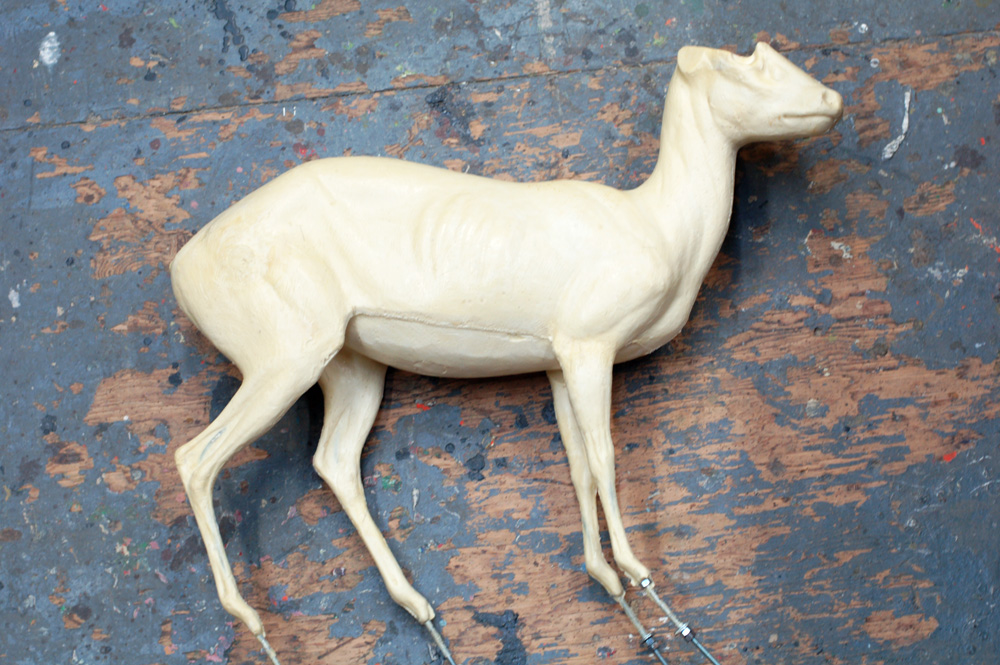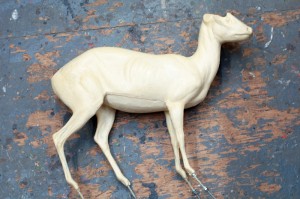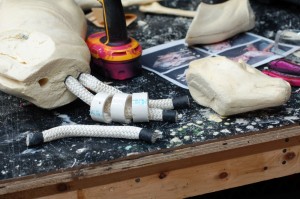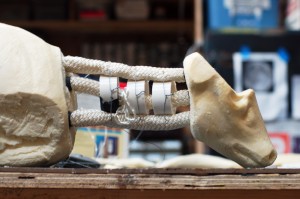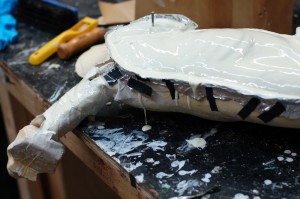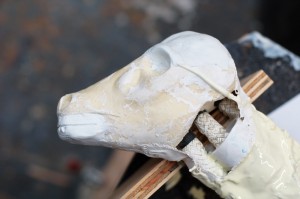The fake dead lamb I made for The Little Foxes was cut.

It wasn’t because they didn’t like it. In fact, they never even looked at it. They had decided the scene would play better without the actors eating a lamb. So they cut it.
As a props artisan, you cannot take it personally. When a prop is cut, it is cut because the play works better without it. If a director (or writer or producer) tries to keep everything in a play just because they spent a lot of money on it or someone spent a lot of time it would quickly bog the production down. Theatre history is filled with the stories of monumental failures like these, where so much money has been spent and so many famous names are attached, but the production seems to crumble under its own weight. They fail because no one was willing to make the cuts or edit away the extraneous elements.
The lamb is amongst the more spectacular of my props to be cut, but there are certainly plenty of others. Remember this guy?
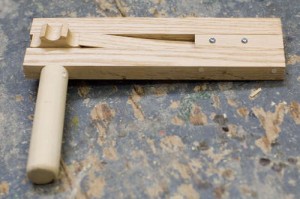
I first made him for the 2009 production of Twelfth Night. Director Dan Sullivan wanted some period noise-makers, and we did not have much in stock. We sent this to rehearsal, but they rejected it. Again, it wasn’t because they disliked it or did not appreciate it; rather the entire “bit” where they would use period noise-makers was re-staged to be something else.
The following year, Dan Sullivan was back to direct our production of The Merchant of Venice. In one of the rehearsal reports, they requested “period noise-makers”. Not to be outdone, I dug this wooden ratchet out of our props stock and sent it up to rehearsal. It again failed to make it into the show. So despite my pride in the construction of this prop, it was cut from two separate productions.

I made this chair for the 2007 production of Tea: A Mirror of Soul at the Santa Fe Opera. There were actually going to be nine of these chairs; I prototyped the construction process on the first three, and then I was going to teach our two apprentices how to build them so they could make the remaining six between them both. I solved a lot of structural and design challenges in my prototype. Besides making the splat appear to be both floating and structural, you will notice that the back uprights are offset from the back legs. Usually, they are one long piece running from top to bottom, which gives chairs most of their strength. So I solved these problems and actually had the first three of these chairs built, when I found out they were cut. They hadn’t even made it into rehearsal. The reason? Most scenic designers design past their budget. They know that some elements or pieces will be cut from their design to bring the budget down. The more crafty (or sneaky, depending on your point of view) designers will actually design things that are extraneous just to have pieces to cut later on. It makes them appear like they’re willing to compromise without actually compromising the design they want. It turns out these chairs were one such element, and the designer did not realize I would build them before they were cut. I guess I’m just too fast and efficient in my work.
Please remember: it is inevitable, if you work in props for long enough, that a prop you adore will be cut from the show. Keep in mind that you are working to make the show better.




















